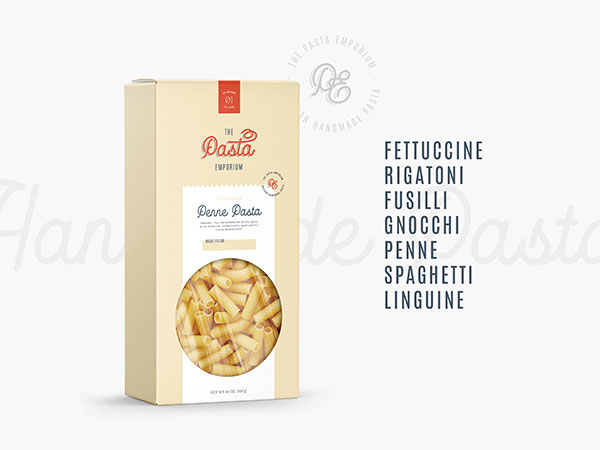Australian Food Packaging Requirements
Australian food packaging must meet Australian standards to be legal in Australia. No doubt, after the exciting adventure of creating your own product, getting the labelling right can feel confusing and overwhelming. This handy guide details the main elements of food labelling to consider before finalising your packaging design.
Disclaimer: As designers, we are not legal advisors, so it’s imperative that you get legal advise on your unique situation.
Connect with a trusted legal professional - Ask us how today.
The importance of food labelling standards
The Australian Food Standards Code specifies the packaging requirements for all Australian food products. The standards exist not only to keep us safe but also to help us make informed food choices. By reading the label, customers should be able to determine whether the product:
- contains any allergens
- provides adequate nutrition
- contains preferred ingredients
- uses additives
- is Australian made
- is fresh.
Standardised food packaging creates consumer trust in the industry and makes it easy for us to purchase safe food that meets our personal preferences.
The risk of incorrect labelling
Labelling your food product correctly can be an arduous task, but it’s worth spending time getting it right. If your product ends up in stores with labelling that doesn’t meet the Australian food packaging standards, your product may be removed and you may even face a hefty fine.
After spending so much time and effort perfecting your final product, the last thing you want is a failed launch and damaged reputation. We recommend labelling your product correctly from the beginning to ensure your product launch is a complete success.
Speak to our packaging experts - for labelling guidance today.
How to label your food product
If you are preparing a new product for launch, be sure to cover each of these elements in your new food packaging design:
- Ingredient list
- Allergens
- Additives
- Nutritional content
- Use by or best before date
- Country of Origin
For a complete list of labelling requirements, visit Food Standards Australia New Zealand (FSANZ).
You can learn more about understanding food labels on this handy site
 |
Ingredient listIt’s not enough to simply list every ingredient contained in your food product. The food packaging standards require you to list ingredients in descending order by in-going weight at the time of manufacturing. For example, if the product contains more sugar than any other ingredient, it must be the first ingredient listed. The second ingredient on the list contributes less to the overall weight than the sugar but more than any other ingredient, and so on. Compound ingredientsMany food products contain compound ingredients, which are ingredients made up of more than one ingredient. For example, tomato sauce or cheese is made up of more than one ingredient. If the compound ingredient contributes more than 5% of the overall weight, you must list each ingredient within the compound ingredient. If the compound ingredient includes an allergen, you must list it, regardless of its contribution to weight. |
Allergens & Warnings
Allergic reactions can be severe, even life-threatening, which is why the Australian food packaging standards specifically require you to list known allergens. These include:
- Nuts and sesame seeds
- Milk
- Eggs
- Fish and shellfish
- Wheat and grains containing gluten
- Soy
- Lupin
Ensure your product’s safety for every customer by ensuring every allergen is listed on your new food packaging design.
You must also include a warning if there are any product safety concerns. For example, one ramen noodle brand wraps each bundle of noodles in a ribbon. Their packaging contains a warning that ribbons should not be eaten.
Additives
Consumers are more aware of food additives than ever before, and FSANZ provide plenty of guidance on how you must list these additives:
1. Generally, you must list the additives class name and food additive number. E.g., Colour (150a)
2. You can normally list enzymes and flavours by their class name alone.
If a food additive contains an allergen, you must explicitly list the allergen.
For a complete list of food additives, click here.
Nutritional content
All food packaging in Australia must include a nutrition information panel that gives the consumer information on:
- Energy
- Protein
- Fat
- Saturated fat
- Carbohydrates
- Sugars
- Sodium
If the food packaging makes a claim, like ‘good source of fibre’, then the nutritional panel must give information to support this claim.
You can use the FSANZ’s nutritional panel calculator to ensure you include the correct nutritional information on your food packaging label
Health Star Rating system
The Health Star Rating (HSR) system is a government scheme that aims to help consumers make healthy choices easily. The system rates a food product’s healthiness out of 5 stars, with 5 being the healthiest rating.
You can download the HSR calculator and artwork here.
Use by or best before dates
You must include a use by or best before date on your food packaging labels.
A use by date is used for foods that become unsafe for us to eat after a particular time frame. Your food product cannot legally be sold once it passes the use by date.
A best before date is used for foods that may lose some qualities after this date but are still safe for us to eat. You can still sell your product after this date, providing it is still safe to eat.
You must include any necessary product storage information relevant to the use by or best before dates.
Country of origin
Australian food packaging standards require you to include the Country of Origin Labelling logo and percentage on most food product labels. This online tool will help you determine if you need a label and allow you to download or customise your own label.
The Australian-made logo
You do not need to include the Australian-made logo to meet food packaging laws, but it can be a great marketing tool if your product is made in Australia.
Click here to read more about the certification process and fees involved in using the logo on your product packaging.
For the complete Food Standards Code, click here.
Food label presentation requirements
Food labels must also follow presentation requirements, including:
- Legibility
All labels must be in English, legible and contrast with the label background. Foreign languages are ok to use but must provide the same information as is given in English.
- Print size
Providing font is legible, you can choose any type or size, except when it comes to warnings and other statements. These must be a minimum of 3 mm (1.5 mm on small labels). Check the Code for size requirements for other statements, like those on infant formula.
- Claims
All imagery, designs and information must accurately describe the contents of the package. You can not include anything false or misleading on the label.
- Label alteration
If the existing label contains incorrect information, you can relabel the product, providing the old label is fully covered by the new one. Otherwise, you cannot deface or alter the label of a food product.
Effective food packaging design
At Graphic Design Australia, we understand the importance of food packaging design. We work with you to create a design and layout that provides space for essential product information, while demanding attention on the shelf. Speak to one of our design specialists about your food packaging needs today and we will support you throughout the whole process.
Answer all your food labelling questions
The Australian Government has provided everything you need to know about food packaging requirements in the links below. By informing yourself of the law and requirements surrounding food labelling in Australia, you will be one step closer to successfully launching your new food product.
Overview and Application of Food Labelling
CHOICE has a great guide to food labelling too, which is very informative.
Here’s an extra link dedicated to product safety rules and standards in Australia, which is another important consideration when launching a food product.
Product Safety Rules and Standards





